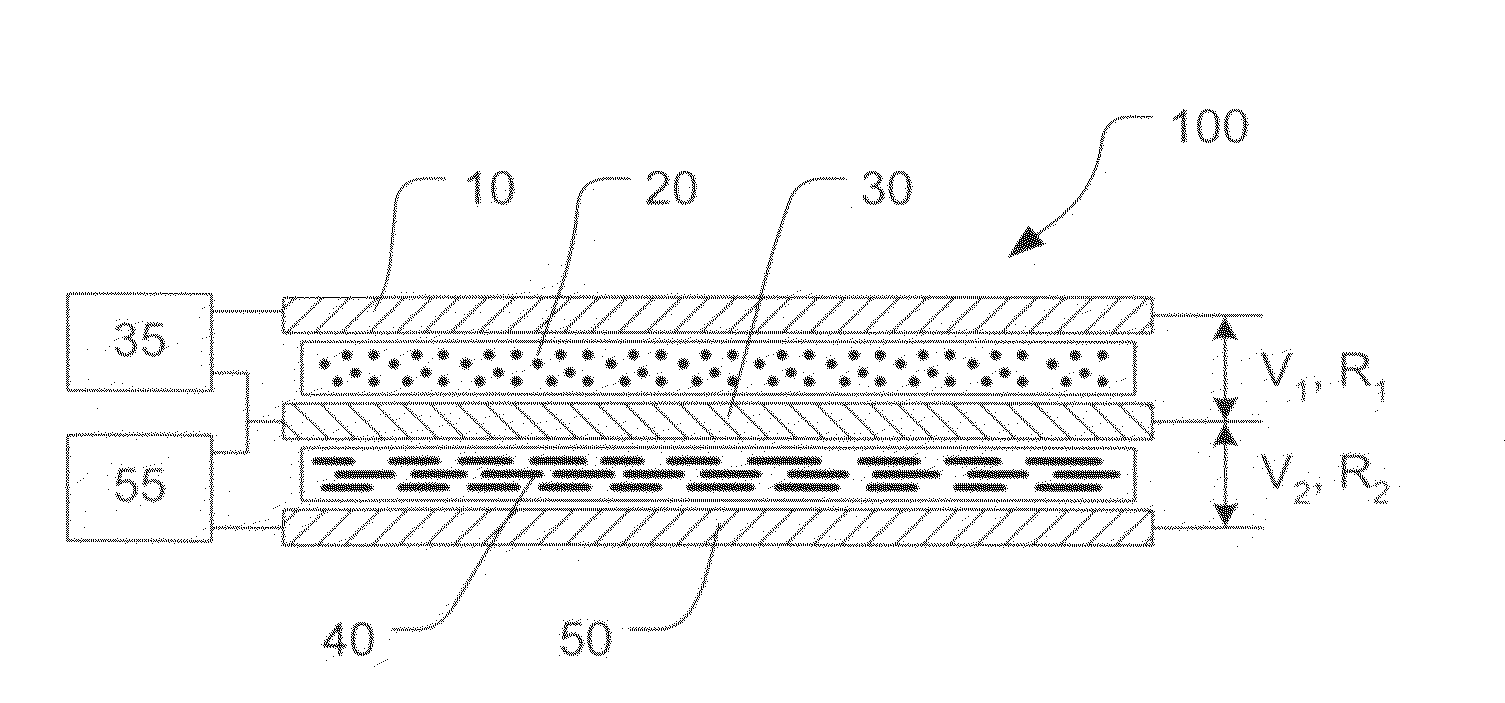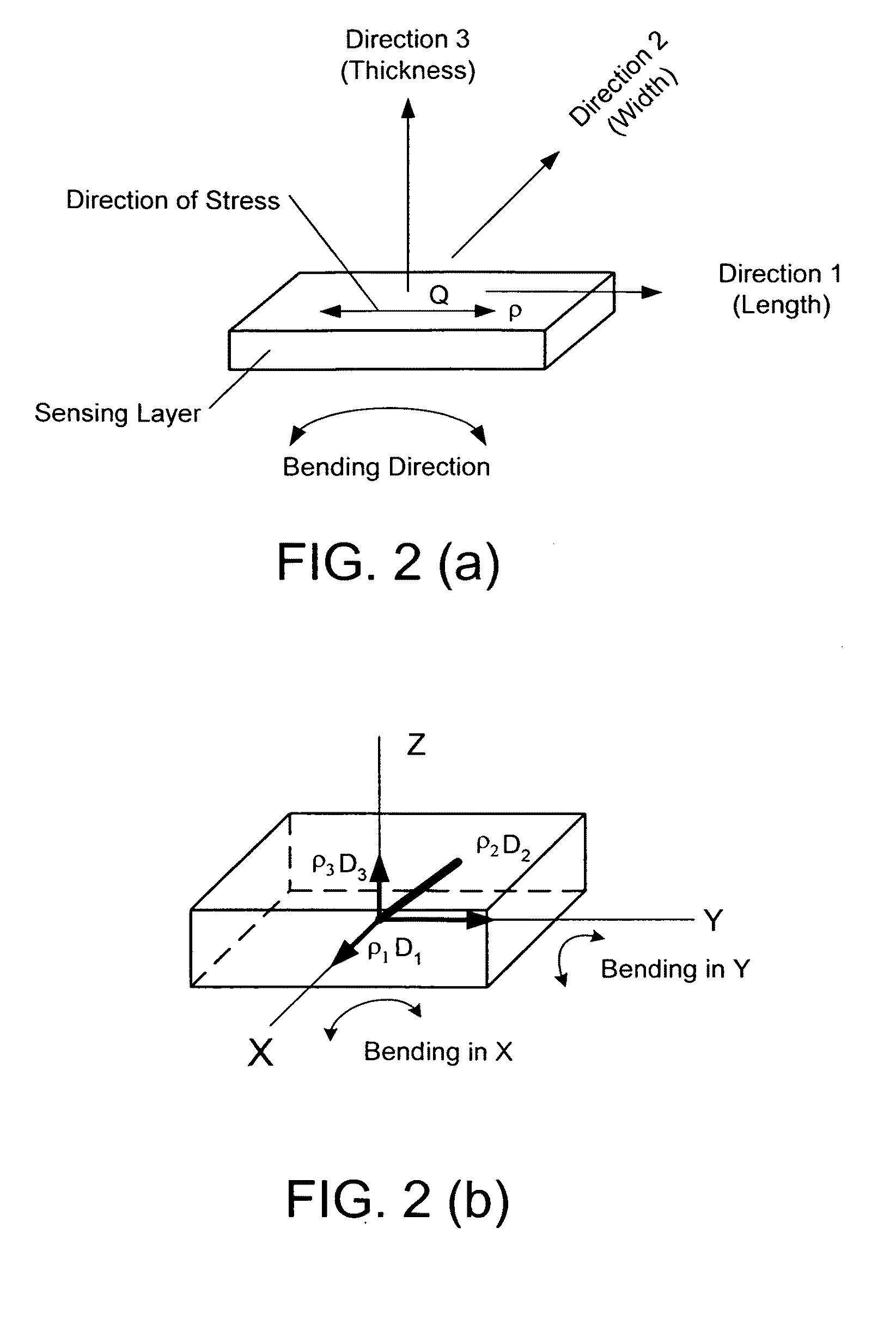Flexural deformation sensing device and a user interface using the same
- Summary
- Abstract
- Description
- Claims
- Application Information
AI Technical Summary
Benefits of technology
Problems solved by technology
Method used
Image
Examples
Embodiment Construction
[0042]Piezoelectric effect is the ability of some materials (notably crystals and certain ceramics) to generate an electric potential in response to applied mechanical stresses. The effect finds useful applications such as the production and detection of sound, generation of high voltages, electronic frequency generation, microbalances, and ultra fine focusing of optical assemblies.
[0043]A piezoelectric sensor is a device that uses the piezoelectric effect to measure pressure, acceleration, strain or force by converting them to an electrical signal. FIG. 1(a) shows a simple piezoelectric sensor that is capable of generating an electrical charge in response to an external stress. Electrodes placed on the piezoelectric material detect the electrical charge when the piezoelectric material receives an external stress and the amount of the charge is related to the intensity of the stress. As shown in FIG. 1(b), a piezoelectric sensor can be modeled as a voltage source V that is directly ...
PUM
 Login to View More
Login to View More Abstract
Description
Claims
Application Information
 Login to View More
Login to View More - R&D
- Intellectual Property
- Life Sciences
- Materials
- Tech Scout
- Unparalleled Data Quality
- Higher Quality Content
- 60% Fewer Hallucinations
Browse by: Latest US Patents, China's latest patents, Technical Efficacy Thesaurus, Application Domain, Technology Topic, Popular Technical Reports.
© 2025 PatSnap. All rights reserved.Legal|Privacy policy|Modern Slavery Act Transparency Statement|Sitemap|About US| Contact US: help@patsnap.com



